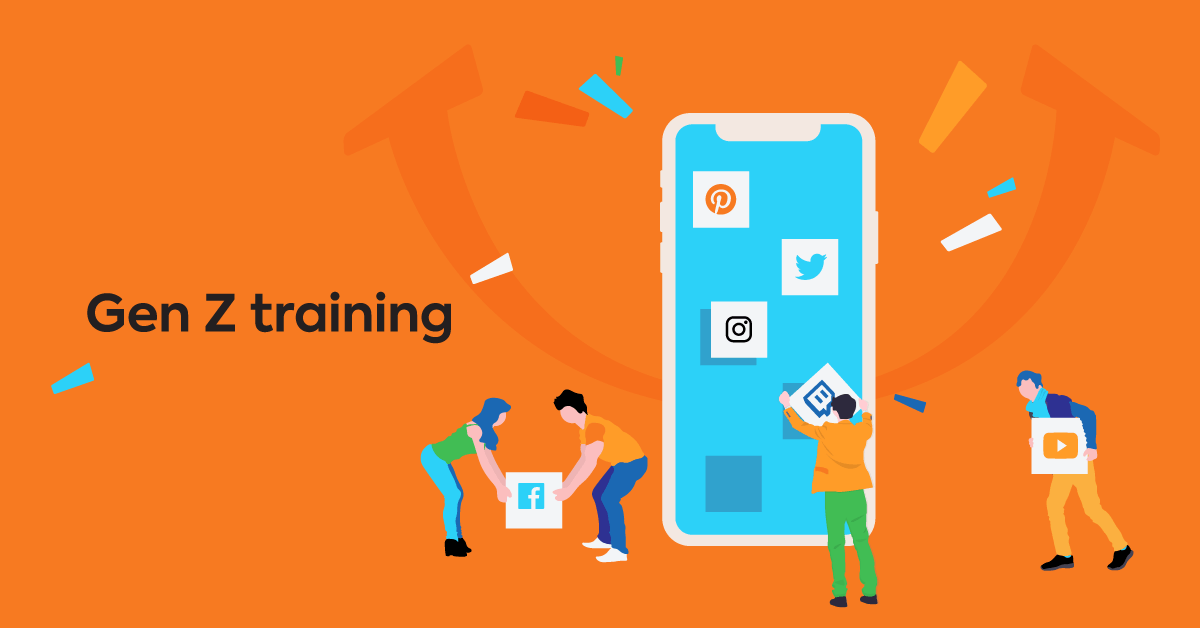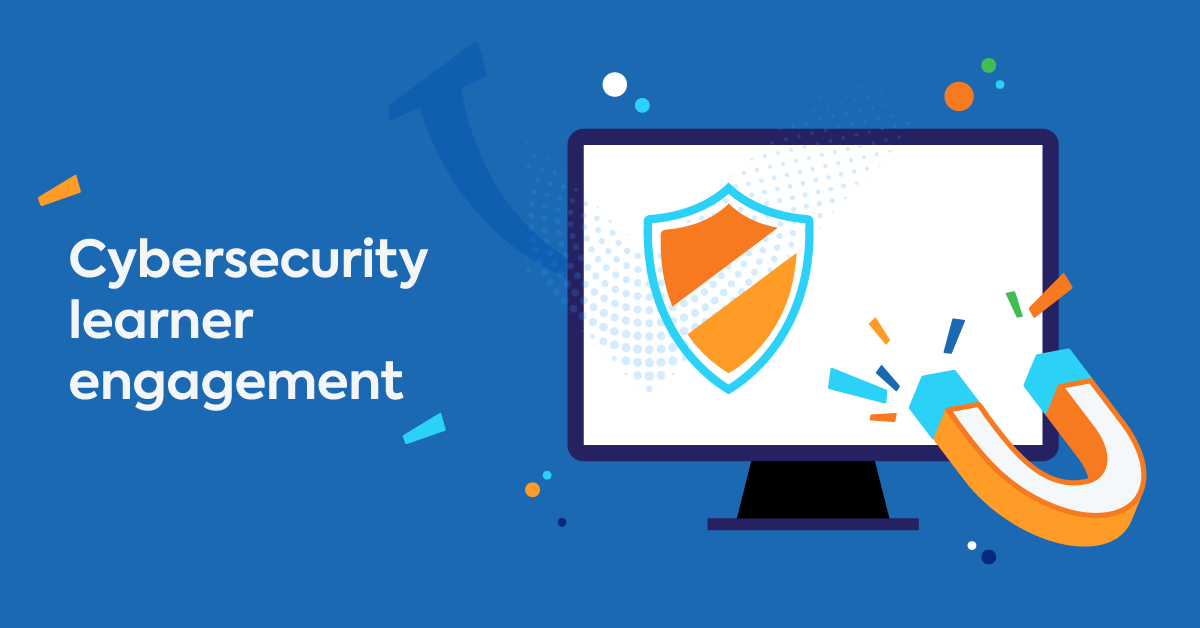As a training manager, you already know what makes for a great eLearning experience: well-designed, engaging, and informative content. However, there’s one crucial ingredient without which your content will fail: ensuring that something isn’t just learned, but also that it achieves learning retention.
What is learning retention?
Learning retention is the process by which new information is transferred from our short-term to our long-term memory. In other words, it’s all about making new knowledge stick. It’s not new science, either: Hermann Ebbinghaus was describing the Learning Curve back in the late 19th century. He also described the Forgetting Curve, which demonstrates how about 70% of any new information is lost within 24 hours if we don’t make an effort to retain it.
You don’t want your employees to forget all that exciting eLearning content you’ve lovingly created a day after their training session. What knowledge retention strategies, solutions, and adult learning theories can you deploy to ensure high learning retention rates after training?
Here are some tips and knowledge retention techniques you can build into your eLearning program that will ensure your content is learner-centered and not just memorable, but unforgettable.
1. Read less, remember more
A major cause of poor knowledge retention after training is having too much information to absorb. Really effective eLearning should follow the dictum that “less is more. “
In this case, try having bite-sized learning objectives – ones that are highly focused on a clearly defined outcome. It’s been demonstrated that learning broken down into smaller, more manageable chunks is far more likely to be retained and remembered for much longer.
The same goes for the length of your eLearning sessions. People can only concentrate for relatively short spans of time, after which their capacity to recall novel information wanes dramatically. Short sessions run frequently are far better for training retention rates than having one gargantuan blowout eLearning module.
2. Tell a story
A great way to bump up your knowledge retention statistics is to exploit the fact that we remember things better when we have an emotional connection to the thing being learned. You can achieve that with storytelling.
How do you do that?
Creating a narrative, with situations and characters that your employees will relate to, helps to get across key learning objectives in an engaging, easy-to-absorb way. Don’t get too carried away and create an over-complex story, however. It’s easy to be swept along with a too-detailed narrative and forget what the learning objectives were supposed to be in the first place.
For instance, creating eLearning videos based on the craft of storytelling is an excellent way to engage learners and boost learning retention. Also, when offering video-based content, it’s a great idea to use characters and stories to which learners can relate. For example, characters from popular TV shows can be used in your videos to help learners further connect and engage, leading to better knowledge retention.
Meet TalentLibrary™
A growing collection of ready-made courses that cover the soft skills
your teams need for success at work
![]()

3. Test, quiz, ask!
One of the simplest learning retention techniques is to incorporate quizzes and assessments in your training content. It helps the learner track their own progress and lets them see what they have learned and retained. It also provides you with data about how effective your learning module is, and whether it needs improving.
However, a final test isn’t enough: To maximize information retention, you should again follow the “less is more” maxim and test more often, after each unit or module. That way, you’re testing for more tightly-defined learning objectives, and your trainees will find it easier to focus on and remember the specified material, rather than a whole bunch of things.
4. Active participants will remember
Many traditional models of learning often view the learner as a passive recipient of knowledge. This flies in the face of almost all knowledge retention strategies. Instead, consider designing content that transforms learners into active participants.
So, how do you go about this?
Research shows that active learning increases engagement and leads to much better retention of new knowledge. Use interactive activities, scenarios, and simulations to really bring your trainees into the learning environment. For even greater immersion, consider using virtual reality activities or virtual learning labs, which will allow your learners to be truly active participants.
5. Repeat to retain
Another simple way to boost learning retention is through good, old-fashioned repetition. Now, that might sound boring, but it’s how you get your trainees to reiterate, which is s important. Repeating new knowledge or tasks is crucial in allowing the information to move into a learner’s long-term memory.
This doesn’t mean you write the same thing 20 times. In an eLearning context, repetition can be achieved through the use of techniques such as simulations and role-playing, as well as having regular refresher units.
Simulations are great for embedding previously taught skills and allow your trainees to get a real feel of how different skills can come together to address a situation. By meshing skills together in this way, knowledge retention is an attainable goal.
Reinforce learning with TalentLMS
Host interactive webinars and build follow-up tests and scenarios.
Easy to set up, easy to use, easy to customize.
6. Apply learning to the real world
The more abstract a concept is, the harder it is to keep it in mind. That’s because we find it harder to memorize things that seem to be unrelated or irrelevant to our environment or needs.
It’s useful to create learning units that are directly applicable to your trainees’ working lives. That way, they’ll see how training will have an impact on what they do and learning retention is far more likely. You can boost this and create active participants by getting learners to discover the usefulness of the concepts they are studying for themselves.
Once again, simulations are a good way to show how your learning objectives apply to the real world and allow learners to see the rewards – or consequences – of taking particular actions in a risk-free learning environment before applying their new skills for real.
Job shadowing is another way to engage learners in training as they have the opportunity to watch closely how more experienced colleagues perform their day-to-day tasks. This is an excellent way to boost hard skills tied to employees’ job roles.
7. Guide learners through
Everyone has slightly different learning styles, and you’ve probably found that some of your trainees aren’t that great at self-guided learning. This isn’t because they’re poor learners — it’s just that the prospect of learning something new without the aid of a guide can seem intimidating. This automatically raises a barrier to effective information retention.
Consider embedding a “talking head” — essentially a video guide or an avatar in your courses and modules. It’ll help to provide a focal point for the key learning objectives, with the avatar acting as a guide, pointing out key features, or asking relevant questions that help the learner focus and absorb new concepts. Another alternative could be an audio guide.
Coaching and mentoring training sessions are another useful way to guide learners in their training. No matter if these training sessions are on-site or remote, learners have assistance throughout their learning journey, where they can ask questions and receive instant feedback. This results in better knowledge retention.
8. Blend learning
In order to enable learning retention (especially for new-age learners) it’s best to invest in blended learning. Blended learning is the combination of traditional learning and online training.
With blended learning, learners can access training resources online or offline. It’s the perfect way to engage all types of learners – those who excel in traditional learning environments and those who thrive in online training environments.
This inclusive way of learning can reach all of your learners–visual, auditory, or kinesthetic. Activating various senses during training helps learners retain information for longer.

9. Offer microlearning modules
We’ve mentioned above that it’s hard to remember big chunks of information. This is why microlearning can help with learning retention.
People can retain knowledge much easier when it’s broken down into smaller, bite-sized training modules. For example, it’s harder to retain information after a 1-hour webinar than a 5-minute training course.
This approach greatly reduces feelings of frustration for employees with short attention spans or employees who face distractions in their day-to-day. On the contrary, by offering mini-courses through your LMS, you allow learners to truly engage in learning and better retain the knowledge they acquire.
10. Teach others
An interesting and innovative way to boost learning retention is by teaching others. Employees can assist peers by offering on-the-job training, coaching, job shadowing, or even sharing knowledge on discussion boards.
When people must explain learning material to others in new and creative ways, they engage with and reinforce their own learning.
11. Review, summarize, and evaluate
The last of our learning retention tips again exploits the fact that active learning participants retain information longer and better. Design your training modules so that they require your trainees to review and summarize what they have learned. Encouraging critical thinking increases learning retention rates over time, as it fosters an active learning mindset, leading to greater learner engagement.
Add a review questionnaire at the end of learning modules alongside a quiz or test, or have group training where participants have to summarize and demonstrate what they have learned – after all, the best way to learn something is to teach it.
Also, don’t underestimate the power of post-learning feedback. By asking training participants to provide you with insights concerning their training, you gather valuable data on what was a big hit and what needs to be improved.
Next-level learning retention
Ultimately, the key to ensuring good learning retention is to understand and adjust to the way in which the adult brain absorbs and holds on to information: Keep learning objectives clear, keep training sessions short, make an explicit link between what is being learned and real-life context, and finally, get trainees to put that knowledge to use as soon as possible.
Incorporate these principles when you create courses, and you’ll have a training program that’s hard to forget.
Originally published on: 24 Apr 2017 | Tags: Learner Engagement



